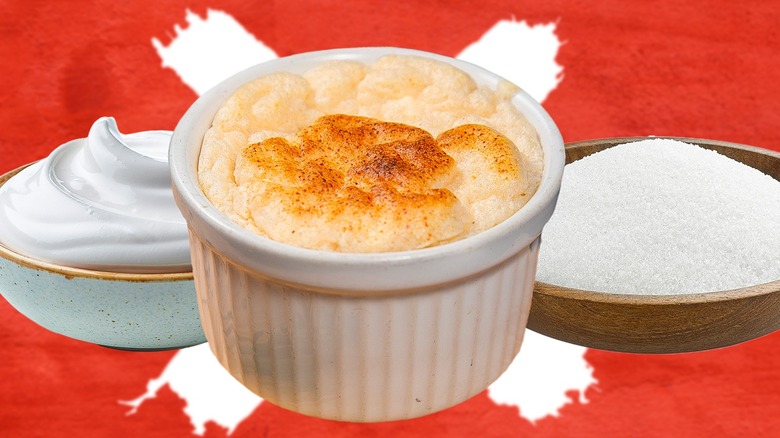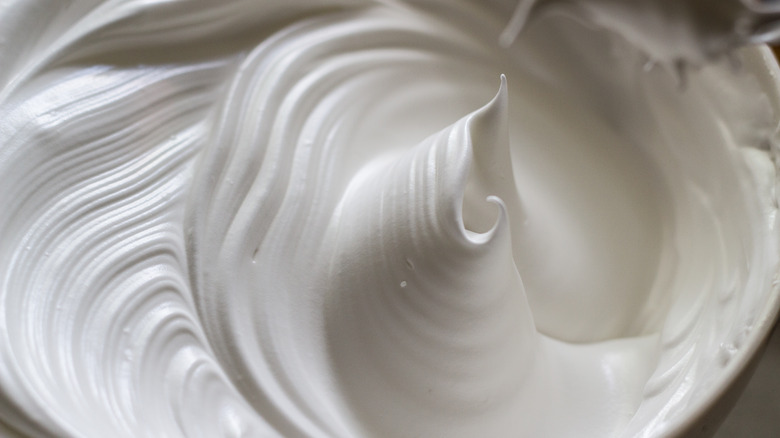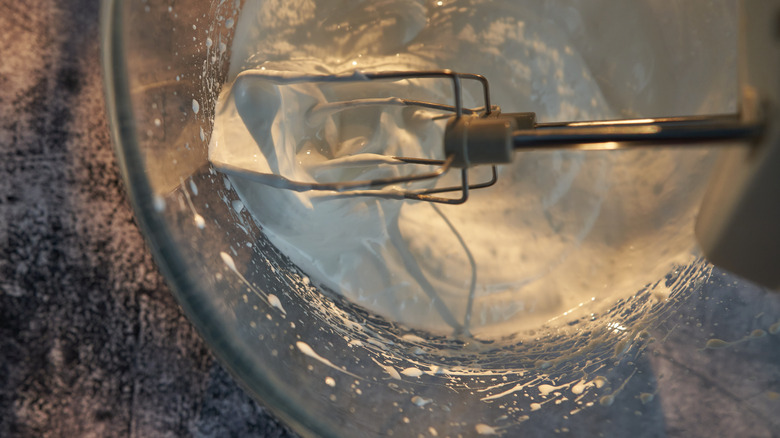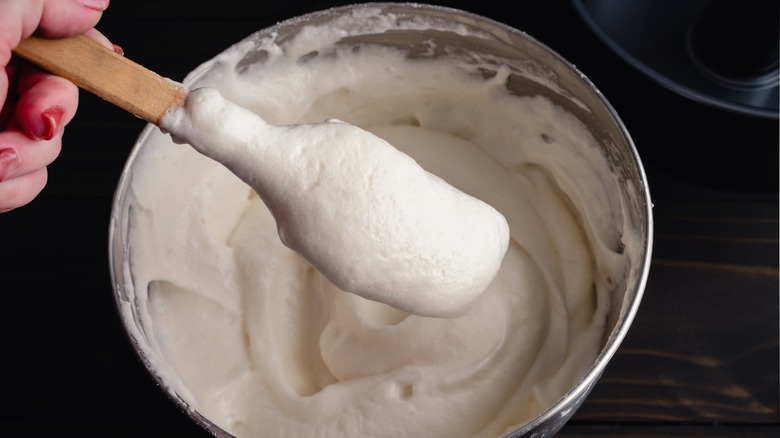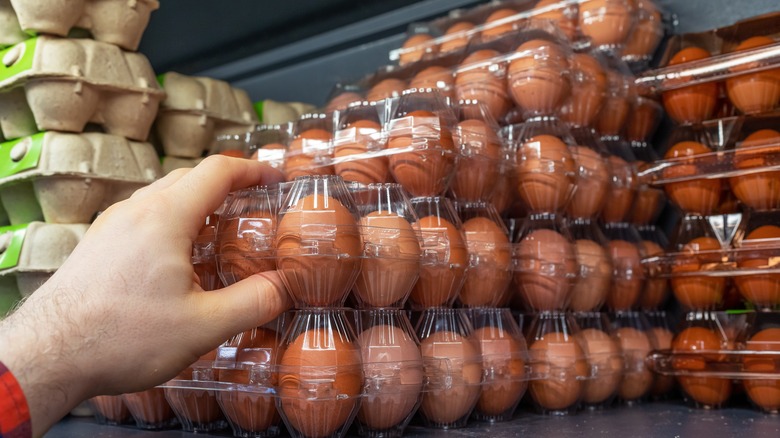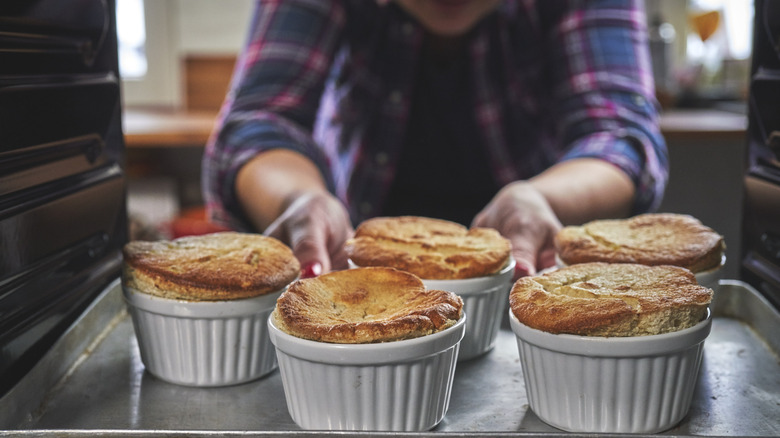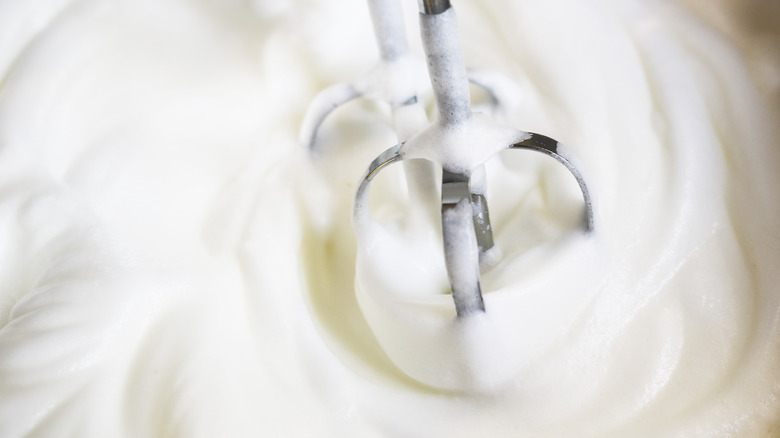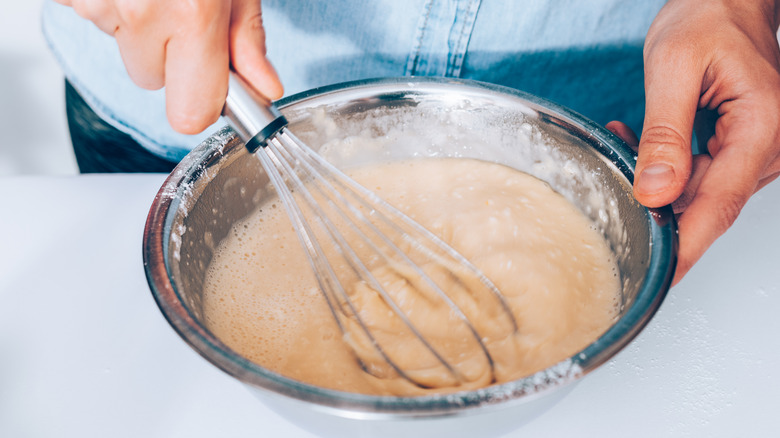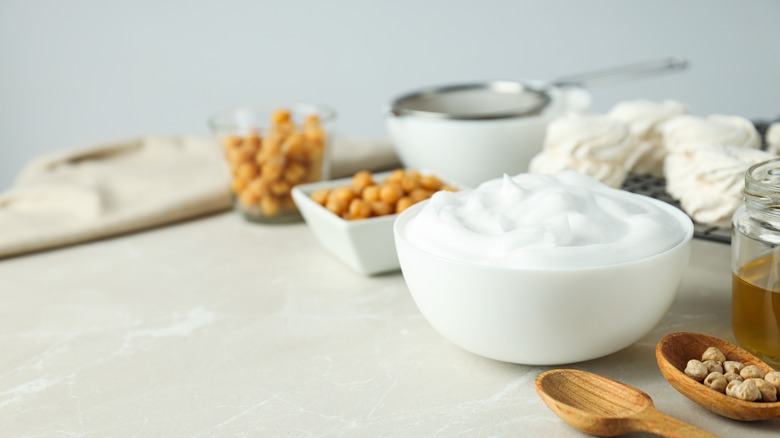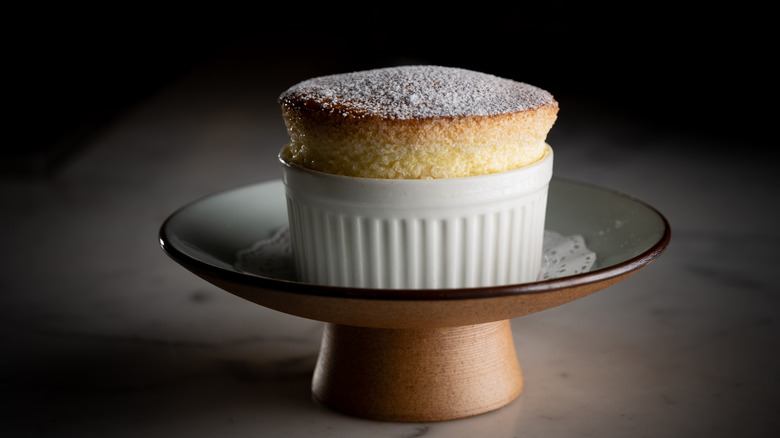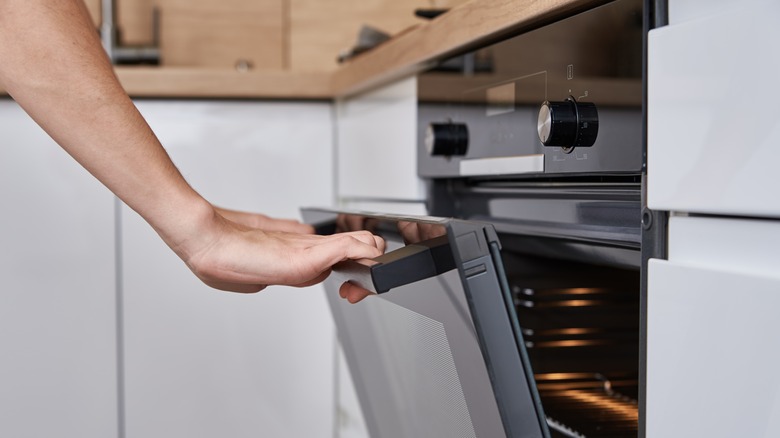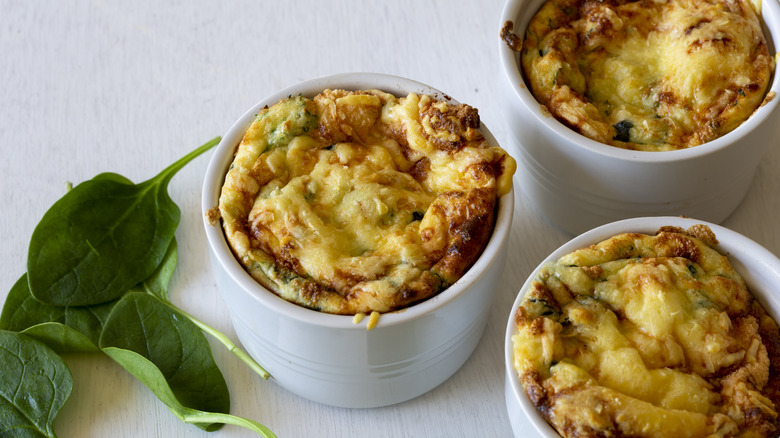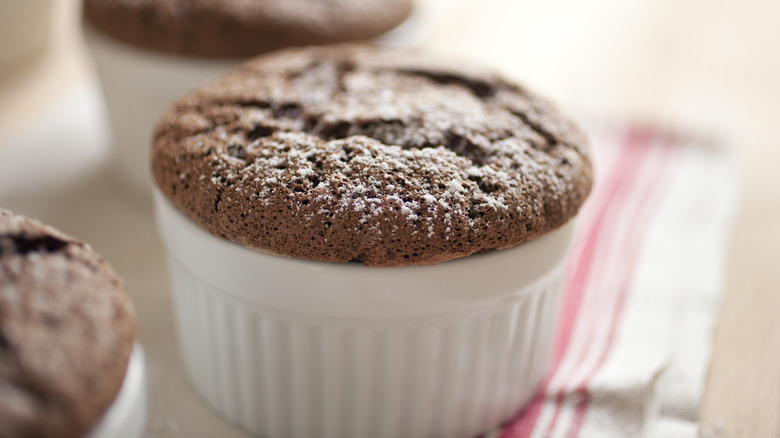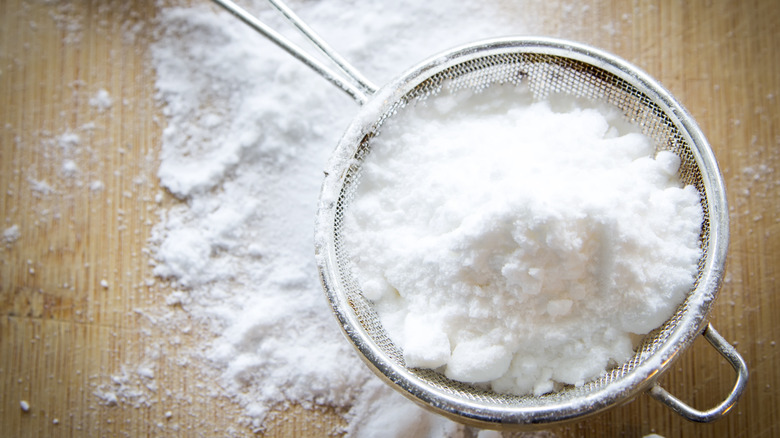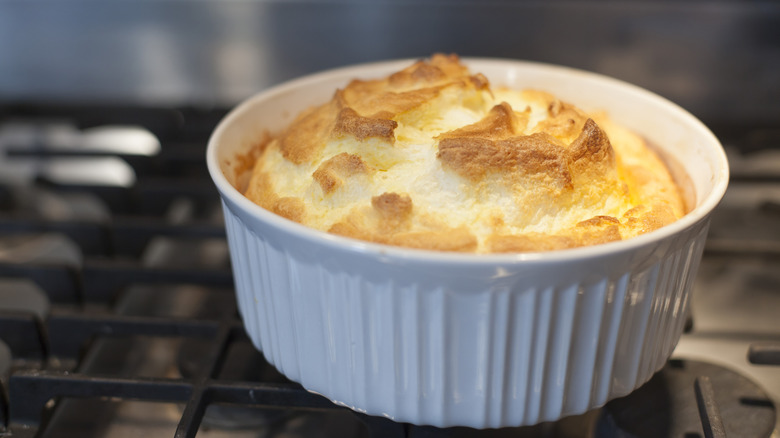Pastry Professionals Share 15 Common Soufflé Mistakes And How To Avoid Them
Every home cook is looking for the pièce de resistance for their dining table. For some, it's a towering cake, complete with elaborate decorations and delicately piped buttercream frosting. For others, it's a roast that looks like it came out of a 5-star restaurant. But one other item that deserves a spot in this category is the soufflé. A soufflé is a French dish that is primarily composed of egg whites, as well as a sweet or savory batter. It's light, airy, fluffy, and towers over the dish that it's cooked in, and seemingly never fails to impress the folks gathered around your table.
However, like other egg white-based dishes (think meringues), soufflé can be rather tricky to master in the kitchen. But luckily, I've recruited some baking professionals, including recipe developer Imsen Senouci and pastry chef Yohann Le Bescond, to help identify some of the places where you may go wrong with this show-stopping dish, and how to step up your soufflé game to ensure that your next one won't fall flat.
Over or under-beating your egg whites
The egg whites are the main lifting agent of the soufflé, so you need to do everything in your power to ensure that the texture of these whites comes out perfect. The beating process suspends the air bubbles, which will ensure that your soufflé is perfectly risen. "Over-beating results in dry, clumpy whites that don't fold well, while under-beating leads to a lack of structure and rise," Imsen Senouci explains.
But how do you know when your egg whites just airy enough? Senouci notes that you should "beat [the] egg whites until they form stiff peaks, but are still glossy." Yohann Le Bescond shares that egg whites beaten to the stiff peak stage "should hold [their] shape when turned upside down."
If you get a little too excited (I won't blame you), you can always fix over-beaten egg whites by adding in additional whites and re-beating them. Of course, it's much easier to monitor the consistency and sheen on your whites as you're whipping them, rather than having to go back and do damage control.
Using a dirty bowl
Cleaning bowls and your cooking materials aren't just important for sanitary reasons; making a soufflé with a dirty bowl may cause issues with the texture and consistency of your egg whites. Fat residue, from oils, pesky grease, or caked-on food can impair your egg whites from properly whipping, which will, in turn, potentially lead to a deflated soufflé.
You should also stick to a glass or metal bowl for whipping, rather than a plastic container, because the plastic tends to hold residual oil. You can also wipe the bowl down with vinegar or a lemon to help any lingering oil. Imsen Senouci recommends using not only a clean bowl for whisking up your egg whites, but also one that is dry. Egg whites tend to be a bit temperamental, and you don't want any additional moisture to alter how they're whipped up.
You may also consider using a copper bowl for whipping up your egg whites. As you mix the whites in the bowl, the copper will infuse into the whites and help bind them together more effectively, in turn preventing them from becoming gritty. Not only does this reduce the risk of your whites becoming over-beaten, but it also keeps that glossy shimmer that you're looking for.
Incorrectly folding your egg whites
You've gotten so far in whipping your egg whites; don't negate your efforts by neglecting to properly fold your egg whites into your soufflé batter. As with whipping the egg whites themselves, there is a right way (and a wrong way) to correctly mix the two together. If you're too heavy-handed, you'll risk beating the air out of the batter and causing your soufflé to fall flat. And if you don't mix it enough, you'll get lumpy batter and an inconsistent texture in your finished soufflé.
To avoid deflating the egg whites in your batter, Imsen Senouci recommends gently mixing the egg whites into the batter (not the other way around). "Cut through the middle, sweep around the sides, and lift the mixture from the bottom," she instructs. "This preserves the airiness crucial for the soufflé's rise." Your finished batter should still be airy and light, more so than that of a traditional cake or pancake batter. A couple of streaks of egg whites are perfectly fine to leave behind.
Using cold egg whites
Temperature is everything when you're baking. Not only is it important to preheat your oven before you start cooking, but you should also bring your ingredients up to room temperature to make your cooking process a little more seamless. For the perfect soufflé, bring your eggs up to temperature before whipping them into the batter. When eggs are warmed, rather than straight out of the fridge, they're much easier to make foamy. If you use cold ones, you may find that they don't whip up as easily or get as airy.
For optimal soufflé height, be sure to pull your eggs and leave them on the counter for about half an hour before you crack them. Other ways to get your eggs to room temperature are to run or submerge them in warm water. It's important to note, though, that eggs that are cold are much easier to separate than eggs that are warm, so you may want to separate them while they're still cold and then bring just the whites up to temperature.
Delaying your cooking time
Time is of the essence when you're cooking anything, especially soufflés. According to Yohann Le Bescond, "the less time in between steps, the better." He goes on to explain that "making soufflés in one shot from the meringue to baking and immediately serving will be your path to success." You don't want to risk losing precious time, as wasting more of it than necessary may cause your egg whites to deflate or your batter to get stodgy.
This means bringing out your ingredients and working quickly once you've whipped up your batter and are ready to prepare your egg whites. In order to expedite the cooking process, you can always establish your mise en place ahead of time, by pulling out and measuring all your ingredients and keeping your space neat. "Some desserts need that extra care, and the soufflé is one that doesn't forgive the pastry chef much," Le Bescond explains.
Skipping a stabilizing agent for your egg whites
Getting the perfect texture on your egg whites isn't easily. Luckily, there are some ingredients that you can add to your egg whites to help them stay strong without dramatically changing the texture of your bake. One of those is cream of tartar. It's the key to getting a taller soufflé, and it will make all the more difference in your egg whites.
Cream of tartar is a byproduct of wine production and can be added to egg whites to help tighten up the proteins. Some recipes will recommend that you use lemon juice instead, but soufflé recipes tend to favor this white powder. This powder doesn't just help strengthen you egg whites; it will also reduce the risk of over-beating them. As long as you stick to the recommended amount in the recipe, you won't risk any adverse issues with flavor. Just remember, you're not baking snickerdoodles, here.
Having inconsistent batter texture
Consistency is key for a lot of things, including baking soufflés. If your batter has residual lumps, clumps, and bumps, you may risk issues with rising when you pop the pan into the oven. The key, as Imsen Senouci notes, is to ensure that the base mixture is perfectly smooth and doesn't have any lumps in it. While it may be okay to leave lumps in your pancake batter, soufflé is a little less forgiving.
Senouci recommends running your soufflé batter through a strainer to eliminate those pesky clumps of ingredients. You can also ensure that your ingredients are sifted prior to mixing, as this may create less issues with clumping down the road. Since the egg whites are the primary rising agent in the soufflé, you should avoid eliminating the lumps in the batter once they have been added into the mix. Otherwise, you'll be setting yourself up for deflation.
Thinking you have to use egg whites
There are many ingredients that the vegan baker should keep on-hand, and a replacement for egg whites are just one of them. While you can use a commercial egg white replacement, using whipped aquafaba is going to be your best bet for a plant-based soufflé. The aquafaba will foam similarly to egg whites, which will give your soufflé, as well as other baked goods, the rise that they need. Some vegan soufflé recipes will also use xanthan gum or potato starches to mimic that texture of the egg, but having that whipped aquafaba is really critical. From there, you can tweak your recipe with other plant-based ingredients to make a soufflé recipe that will appeal to a range of eaters.
Like eggs, you should add a pinch of cream of tartar for stable aquafaba meringues. An ⅛ teaspoon of cream of tartar for every 2 tablespoons of aquafaba should suffice. Or, you can buy a can that uses kombu, a type of seaweed, and skip the stabilizers altogether.
Choosing the incorrect vessel to bake your soufflé
Your pan plays a critical role in how your soufflé rises in the oven. Not only will it be absolutely devastating to watch your soufflé not rise to its fullest potential, but it will be just as maddening to have your pan come out of the oven only to find that it has stuck to the sides of the pan.
Imsen Senouci recommends using a straight-sided pan that's been buttered and lined with sugar or breadcrumbs. "The sides help the soufflé rise vertically, and the butter and coating provide traction," she explains. Another way to set your soufflé up for success, Senouci notes, is to run a knife along the inside edge of the ramekin before you pop it in the oven. Not only does this discourage the batter from sticking to the sides, but it will also offer a neat and puffy "top-hat effect" on your finished soufflé. You can also ensure that your soufflé has a perfectly flat top by swiping a knife over the top of the ramekin before you pop it in the oven. It's recommended that you try this over a bowl, rather than on a countertop, so that you aren't wasting any of that precious batter that you worked so hard to make.
Opening the door too much when your soufflé is baking
Opening the oven door while something is baking is something that we are all too often guilty of. But, I can promise you that your cookies, cakes, and in this case, soufflés, will still be there when the timer goes off. When you pop open your oven even for a few seconds, you'll let all the heat escape and cause a dramatic temperature shift. Soufflés are finicky and do not do well when there is a dramatic shift from super-hot to cold. So, you should instead keep the oven closed as your soufflé is baking. An oven thermometer, as Imsen Senouci notes, is a tool that can help you ensure that your temperature is perfect.
Another consideration that you should make before you start taking out your ingredients is that your oven is actually calibrated. You may not be able to trust a built-in oven thermometer because ovens tend to have hot spots, or the temperature reading itself may be unreliable. In fact, you may have up to a 50 F difference in what you think your soufflé is baking at and what it's actually baking at. So, don't take your oven knob as gospel and get an oven thermometer, instead.
Skipping the savory cheeses
You don't just have to settle for a boring, ho-hum soufflé. In fact, there are tons of ways to dress your dish up, and one of them is bringing cheese to the party. This fluffy cheese soufflé recipe utilizes Gruyère and cheddar to give the soufflé a subtle nutty, yet savory flair. The flavor here would be excellent for pairing with subtle herbs; you'll just want to avoid upsetting the delicate balance of flavors in the dish.
If you have a little bit of Dijon mustard in your recipe, you may also consider adding Parmesan for a bit of a more umami flavor. Typically, you'll want to stick to finely grated cheese so that the texture is subtle and not super stringy, like a mozzarella would be. You could also add some grated cheese on top right before you pop your tray in the oven. But, don't be too heavy-handed, as you could potentially weigh your soufflé down. Plus, savory soufflés tend not to rise as easily as sweet ones because they have less sugar in the batter. The long and short of it is that although it may not look pretty, at least it will taste good.
Not sticking with a simple recipe first
Soufflés can, no doubt, be intimidating to make — especially if you consider yourself to be an amateur baker. That being said, you can master a two-ingredient chocolate soufflé, so long as you have a jar of Nutella and eggs. Add the yolks in with the Nutella and reserve the whites for whipping. Incrementally combine the two together before popping this sweet treat into the oven to bake.
The best part about this soufflé recipe is that you can dress it up with an array of ingredients likely already in your fridge or pantry. A sprinkle of powdered sugar will add a refined touch to your dessert, while a smattering of sauces would make it all the more decadent. In the summertime, chocolate soufflé is the perfect pairing for a light spoonful of whipped cream and some sliced berries. It goes to show that some of the best things in life are the simple things.
Over or under-baking your soufflé
Being mindful of how long your soufflé is in the oven is critical — especially considering that you can't open the oven for the first half an hour or so of baking. You'll have to rely a lot on looking at the texture of the soufflé from outside of the oven to determine when it's time to pull it. If you take it out too early, it will be mushy and collapse. But if you give it even a few minutes too long, you may end up with a dry, cracked soufflé that looks anything but appetizing.
A properly baked soufflé should be double the height it looked like going in. Once you are confident that it has set and will not collapse when you open the door, you can pull out the tray and give it a little tap. A slight wobble is acceptable, but you don't want it to be jiggly like Jell-O. The top should also be matte, rather than shiny.
Not adding sugar to your egg whites
The egg white trick to take chocolate soufflés to the next level is more simple than you might think, and it's easy to employ — even if you consider yourself to be a beginner baker. The secret is adding a bit of powdered sugar to your egg whites to help stabilize them. You'll want to leave the granulated sugar out of the equation here. The powdered sugar has the perfect degree of sweetness and will more readily dissolve into the egg whites when you start whipping them. Once the sugar dissolves, it will take up moisture in the egg whites and help solidify the whites a little more. Moreover, you'll want to avoid granulated sugar in your egg whites because it could make the meringues quite gritty.
When you add the powdered sugar in, be sure to add it incrementally, rather than dumping the whole amount in at once. Your egg whites should also be at the soft peak stake (gentle and fluffy) before you start pouring the sugar in.
Thinking you can't make them ahead of time
Soufflés have long been thought of as a food that is really only good to eat the day its preprepared. But, as long as you think ahead of time, you could have soufflés to enjoy throughout the week. To make this dish ahead of time, you'll want to prepare your batter, egg whites included, but refrain from adding veggies or meat until you're ready to serve. The main issue with these add-ins is that they will expel moisture into the batter and alter its texture.
You can portion your ramekins (a ladle makes for easy, clean pouring) and place them in the fridge for up to a day. Or, freeze the batter in freezer-safe cups before defrosting them in the microwave and baking them in the oven. I won't say if these soufflés are as good as ones that you'd make the day-of, but I'll leave that for you to decide.
